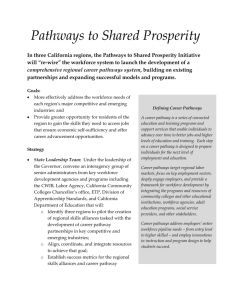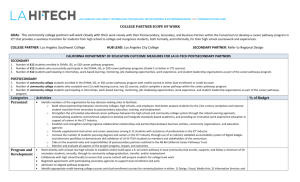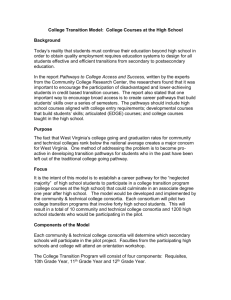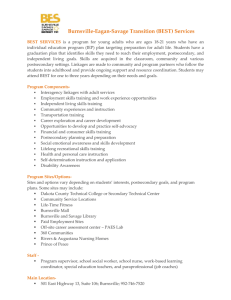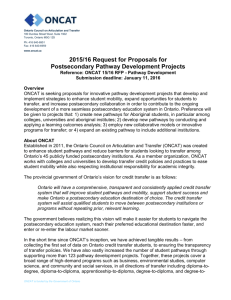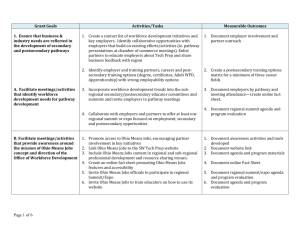Pathways Implementation Ideas
advertisement
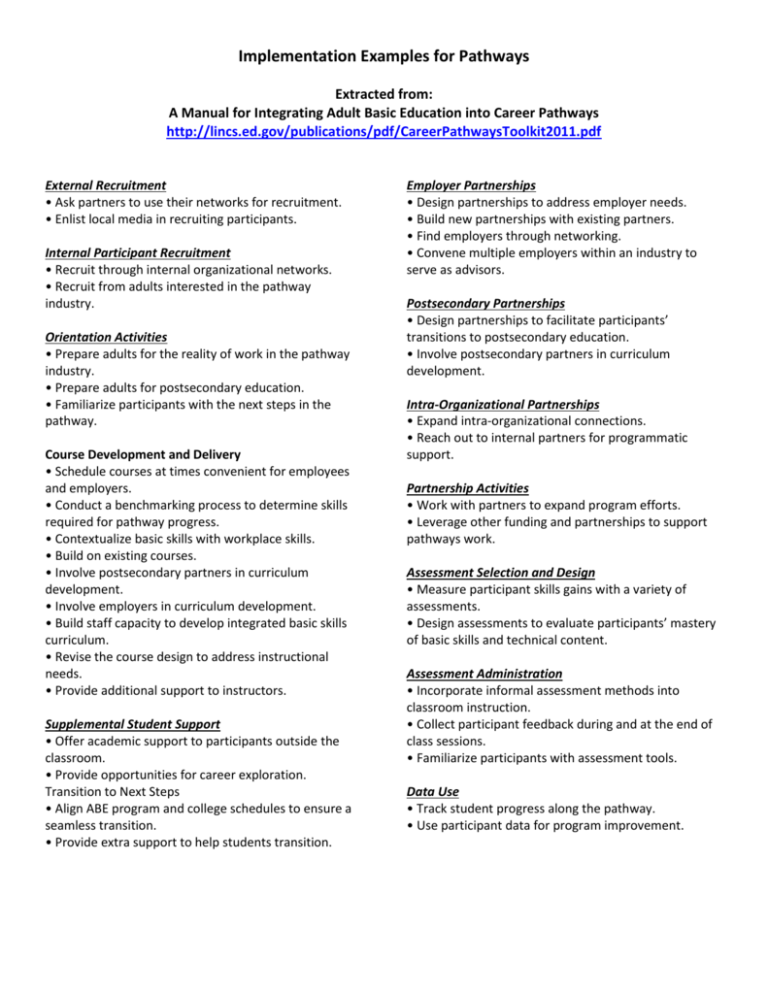
Implementation Examples for Pathways Extracted from: A Manual for Integrating Adult Basic Education into Career Pathways http://lincs.ed.gov/publications/pdf/CareerPathwaysToolkit2011.pdf External Recruitment • Ask partners to use their networks for recruitment. • Enlist local media in recruiting participants. Internal Participant Recruitment • Recruit through internal organizational networks. • Recruit from adults interested in the pathway industry. Orientation Activities • Prepare adults for the reality of work in the pathway industry. • Prepare adults for postsecondary education. • Familiarize participants with the next steps in the pathway. Course Development and Delivery • Schedule courses at times convenient for employees and employers. • Conduct a benchmarking process to determine skills required for pathway progress. • Contextualize basic skills with workplace skills. • Build on existing courses. • Involve postsecondary partners in curriculum development. • Involve employers in curriculum development. • Build staff capacity to develop integrated basic skills curriculum. • Revise the course design to address instructional needs. • Provide additional support to instructors. Supplemental Student Support • Offer academic support to participants outside the classroom. • Provide opportunities for career exploration. Transition to Next Steps • Align ABE program and college schedules to ensure a seamless transition. • Provide extra support to help students transition. Employer Partnerships • Design partnerships to address employer needs. • Build new partnerships with existing partners. • Find employers through networking. • Convene multiple employers within an industry to serve as advisors. Postsecondary Partnerships • Design partnerships to facilitate participants’ transitions to postsecondary education. • Involve postsecondary partners in curriculum development. Intra‐Organizational Partnerships • Expand intra-organizational connections. • Reach out to internal partners for programmatic support. Partnership Activities • Work with partners to expand program efforts. • Leverage other funding and partnerships to support pathways work. Assessment Selection and Design • Measure participant skills gains with a variety of assessments. • Design assessments to evaluate participants’ mastery of basic skills and technical content. Assessment Administration • Incorporate informal assessment methods into classroom instruction. • Collect participant feedback during and at the end of class sessions. • Familiarize participants with assessment tools. Data Use • Track student progress along the pathway. • Use participant data for program improvement.

